 Film-Nr.: 112
Film-Nr.: 112Vorführungstermin: Festival-Eröffnung | Mittwoch, 12. August 2009, 18 Uhr (Hauptfilm) — [VN 11]
Themenschwerpunkt: Der Kampf um's letzte Paradies: Seychellen
Englischer Titel: A Grain of Sand
Originaltitel: A Grain of Sand
Deutscher Titel: Ein Sandkorn
Herkunft: Spanien/Kanada/USA 2009
Laufzeit: 83 min.
Sprachfassung: Englische Originalfassung
Regie: Joseph Johnson Cami
Produzent: Ayelen Liberona, Joseph Johnson Cami, Ron Johnson
Schnitt: Ayelen Liberona, Joseph Johnson Cami
Kamera: Jaume Avizanda, Manel Capdevila
Musik: Nick Murr
Produktion: Wandering Eye Productions. Barcelona & Toronto
URL Film-Homepage: http://www.agrainofsandthefilm.com + http://www.wanderingeyeproductions.com
Premierenstatus: Europäische Erstaufführung
Bisherige Aufführungen: Reel Earth - Aotearoa Environmental Film Festival, Palmerston North, Neuseeland (WP)
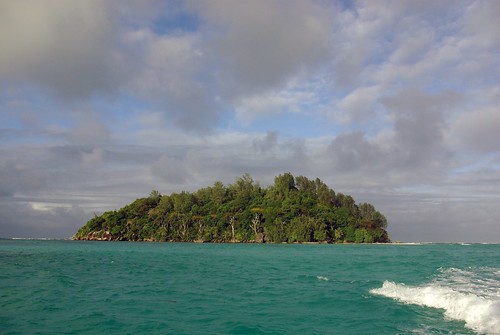
Kurzinhalt: 1972 kaufte der britische Zeitungsmann Brendon Grimshaw die kleine Seychellen-Insel "Moyenne Island" für damals 10.000 englische Pfund. Ihm war damals so, als brauchte er einfach eine einsame Insel zum d'rauf Leben. Konsequent gab Grimshaw seine Tätigkeiten als Chefredakteur englischsprachiger Zeitungen in Afrika auf und zog ganz auf seine Insel, ein Lebenstraum. Im Verlauf der nächsten 36 Jahre pflanzte er mit einem Freund 16.000 Bäume, legte 4,8 Kilometer Naturpfade an und züchtete 109 Riesenschildkröten. Damit ist in knapp 40 Jahren eine Insel voll unbeschreiblicher Schönheit als Kulturleistung entstanden, die heute nach zudringlichen Angeboten von Immobilien-Haien nun 34 Millionen EURO wert ist. Der Film ist eine Reise zu diesem Mann und seiner einsamen Insel (die sich mit bescheidenen Eintrittsgeldern von kleinen Besuchergruppen trägt). Zugleich ist "Das Sandkorn" eine intensive Begegnung mit dem heute 82-jährigen, der ohne Erben dafür kämpft, dass sein Lebenswerk nicht zum Spielball von "Immobilien-Entwicklern" wird, die am liebsten Ressourcen-verschleudernde Hotelanlagen mit Swimmingpools auf "Moyenne Island" errichten möchten. Der klassische Konflikt also zwischen Natur, Kultur und Kapital, zwischen der Lebenszeit eines Individuums und ökonomischen Strukturen, die mit Zerstörung eine vermeintliche Sicherheit von Stabilität und Dauer geben wollen. Sollen also die letzten kultivierten Naturparadise bald nur noch für die oberen 10.000 Einkommensmilliardäre der Welt zugänglich sein, die sich 2.000 EURO Zutrittspauschale pro Tag leisten können? Der Film stellt Fragen an die politischen Verantwortungsträger auf den Seychellen.
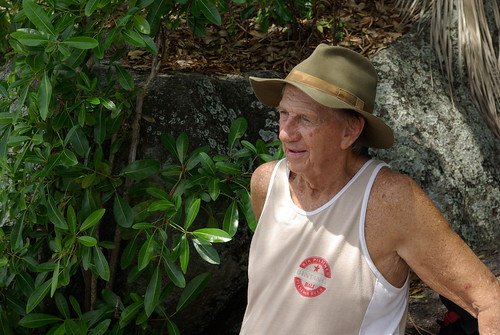
Trailervideo: http://blip.tv/file/2245594 + http://www.youtube.com/watch?v=MP_arV9s60k
Englische Synopsis: A mythical journey to one of the last remaining battlegrounds where the future of one man and an island stand against the ever-expanding reach of our insatiable desires. Brendon Grimshaw, a British national, was editor to some of the most important newspapers in Africa. But in 1972, he gave it all up to go and live on Moyenne Island, which he purchased for ten thousand pounds. In the thirty-six-years that he has lived on the island, Brendon and his friend, Rene Lafortune, planted sixteen-thousand trees, built 4,8 kilometres of nature paths, and brought and bred 109 giant land tortoises, creating an island of incredible beauty now worth 34 million Euros. Come with us on this journey and discover why an 82-year-old man fears his island will one day be destroyed.
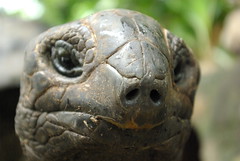
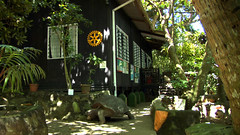
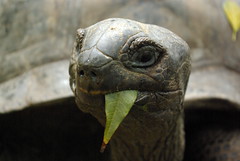
Englische Werkbeschreibung: A Grain of Sand was filmed in the summer of 2007 and is an 83 minute documentary that tells the love story that came to be between Brendon Grimshaw and Moyenne Island. Brendon Grimshaw, a British national, was editor to some of the most important newspapers in Africa. But in 1972, he gave it all up to go and live on Moyenne Island, which he purchased for ten thousand pounds. In the thirty-six-years that he has lived on the island, Brendon and his friend, Rene Lafortune, planted sixteen-thousand trees, built 4,8 kilometers of nature paths, and brought and bred 109 giant land tortoises, creating an island of incredible beauty now worth 34 million Euros. But pristine tropical islands with beautiful eco-systems have become a rare commodity in a world that seems to measure everything in economic terms. And there is a voracious global appetite for places like Moyenne Island, which will be passed on to unknown hands when Brendon dies, as he does not have any children. And what does capitalism want to do with his island, you might ask? Well, it wants to apply its newly popular 5-star “eco-tourism” resort formula, which would effectively privatize Moyenne Island and offer it as a tourist destination to those rich enough to afford the up to 2000 euro per night price tag. With this accomplished, the developers, environmentalists and politicians involved would claim another success story. In their mind, they took a profitless piece of land and conserved the majority of its beauty. Who cares if the only people who will ever get to see that island again will have to be rich and on vacation? Who cares if you transform a temple of 16,000 trees with nature paths for all to visit into a private resort with 5-star bungalows? No, this is the new world we live in, where the speculation and privatization of the last beautiful natural habitats in our devastated world is seen as a Darwinian solution to our problems. Brendon’s story on Moyenne Island gives us a perfect view of many of the problems and ideas that we are confronted with in this Brave New World, where organizations like the IMF and World Bank force small countries like the Seychelles to completely liberalize their economy in exchange for any future loans. So what trend can you really expect from a country where 81% of the jobs are related to the tourism industry? How can you ask these people to sacrifice the opportunity of more wealth and prosperity in exchange for environmental protectionism when the United States and Europe have not done the same? There is no one side to this argument and a solution does not seem around the corner. But Brendon remains hopeful and continues to get up every morning and dedicate his time, love and energy to an island that seems to deserve more than an uncertain future.
Dieser Film aus dem Programm des Globians Doc Fest wird wiederholt und zwar am 14. Oktober 2009 um 21.00 Uhr im Eiffelturm-Kino Berlin (im Centre Français de Berlin), Müllerstr. 74, U-Bahnhof Rehberge/Afrikanische Straße.
Dieser Film aus dem Programm des Globians Doc Fest wird wiederholt und zwar am 18. November 2009 um 22.30 Uhr im Berliner Kino "Eva Lichtspiele", Blissestraße 18, Berlin-Wilmersdorf, U-Bahnhof Blissestraße.
GLOBIANS DOC FEST BERLIN
August 12 - 17, 2009
Kino Toni, Antonplatz




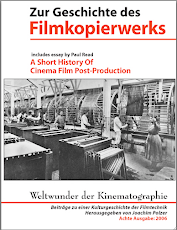







Keine Kommentare:
Kommentar veröffentlichen
Hinweis: Nur ein Mitglied dieses Blogs kann Kommentare posten.